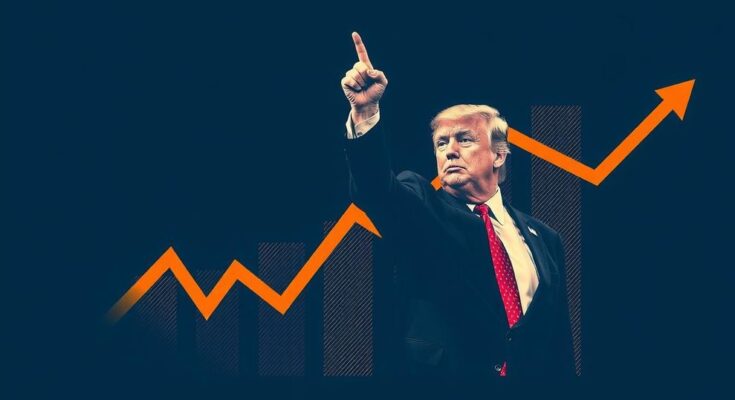As Trump campaigns for a second term, he emphasizes radical changes to the U.S. economy through tariffs and tax cuts, aiming to reduce inflation and restore American jobs. However, many economists predict his policies could exacerbate inflation, raise costs for consumers, and threaten long-term stability in social programs. His proposals raise significant debates over trade policy, labor, and fiscal responsibility, leaving a lasting impact on the nation’s economic landscape.
As Donald Trump embarks on his campaign for a second term, he emphasizes a bold vision for revitalizing the U.S. economy, promising a significant overhaul of current trade policies, including tariffs on imports, and tax cuts aimed at individuals and corporations. He argues that lowering taxes and imposing tariffs will restore American jobs and bring inflation down, but some economists warn that these measures could worsen inflation instead. Trump’s plan includes imposing universal tariffs ranging from 10% to 20% on all imports and up to 60% on goods from China, claiming this will bolster domestic production. This protectionist stance marks a departure from longstanding U.S. trade policies, raising fears of retaliatory tariffs from trading partners and a potential trade war that could hurt the economy further. During his first term, tariffs on steel and aluminum led to counter-tariffs from places like Canada and the EU, negatively impacting American farmers. Economists caution that new tariffs could trigger similar responses, reducing stock market stability and hurting U.S. multinationals that rely on global supply chains. Trump’s assertion that these tariffs wouldn’t affect consumer prices is met with skepticism, as typically, import costs are passed down to consumers. Average American household costs could spike by $2,600 annually under Trump’s policies per reports, climbing as high as $7,600 because of tariffs. While Trump eyes tax cuts extending to individuals and a reduction in the corporate tax rate from 21% to 15%, the tax relief may primarily benefit high-income earners, with the potential to increase the national debt by $5.8 trillion. Trump seeks to exert influence over Federal Reserve decisions, an independent agency. He has criticized its interest rate policies in the past, asserting that such input is warranted, although economists warn that such influence could jeopardize long-term economic stability. As part of his campaign, Trump claims that deporting numerous undocumented immigrants would lower housing prices. However, while some research connects immigration with increasing rents, the direct relationship remains contested. His policy intentions risk disrupting labor-dependent industries, raising the overall cost of living instead. Trump maintains a promise to protect Social Security and Medicare benefits while planning to eliminate taxes on these benefits and maintain current retirement age policies. However, these tax cut proposals may significantly undermine long-term funding for these programs. Furthermore, experts warn that the combination of proposed policies could drive Social Security insolvency years earlier than planned, jeopardizing senior citizens’ benefits. On student loans, Trump remains staunchly opposed to widespread forgiveness, claiming it would be unfair to responsible borrowers. Although he has paused payments during the pandemic, he aligns himself against continuing such debt relief initiatives. With energy prices impacting inflation, Trump pledges to cut energy costs by expanding domestic oil and gas production and reducing government barriers. He has declared that reducing energy costs will alleviate overall inflation, boosting consumer purchasing power and economic growth. However, while the desire for lower prices echoes hope, the execution remains contingent on numerous unpredictable factors in the energy market.
As Trump campaigns, his economic policies resonate strongly with themes of protectionism and tax reduction. Aimed at combating inflation and restoring American jobs, his proposals sow a complex narrative about trade impacts, fiscal responsibility, and the role of immigration in the economy. The context of his past presidency informs expectations about potential future economic outcomes, blending ambition with controversy as experts weigh the feasibility of his plans. Discussions surrounding his proposed policies highlight the delicate balance government must strike between national interests and global economic realities.
Trump’s bold economic vision includes sweeping tariffs aimed at protecting American jobs, extensive tax cuts, and promises to uphold Social Security and Medicare. However, the potential consequences of these measures raise concerns among economists regarding inflation, market behavior, and the effects on immigrant labor. As supporters cheer his return to nationalist economic policies, opponents warn of the broader ramifications for the economy at large. Ultimately, Trump’s economic agenda hinges not only on restoring jobs but crafting a sustainable future for all Americans, a journey fraught with challenges ahead.
Original Source: time.com



